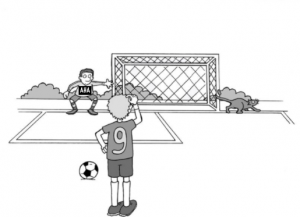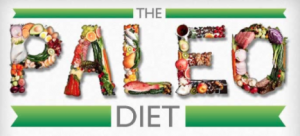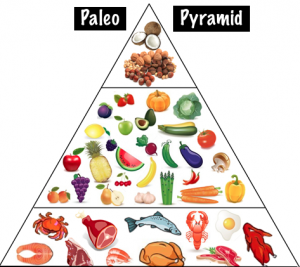The Shifting Goalposts!! 
Given the recent lowering of the High Blood Pressure Guidelines which was spearheaded by the American Heart Association AHA and the the American College of Cardiology (ACC) and introduced in mid November, more people than ever are now considered to have Hypertension.
The shifting goalposts have netted a further 4.2 million American adults alone!!
Since many of the newly diagnosed “Hypertensives” previously fell into the now defunct Pre-hypertension category, there is every reason to believe that it should be possible to lower their blood pressure back into the Normal range, i.e. less than or at 130/80 without automatically prescribing them a life-long sentence of anti-hypertensive medications.
In my ongoing efforts to find all natural remedies for high blood pressure, I have come to the conclusion that Diet is one of the first things to look at when considering a lifestyle change which will benefit your blood pressure levels. Today I would like to talk about a Diet which has shown some potential for helping not only to reduce BP but also to assist in weight loss.
And this diet is….
An Ancestral Diet for Humans … just ask the Cavemen!!
The whole premise of this diet is that it relies heavily on consumption of foods which were available to our ancestors way back in the Stone Age, or Paleolithic era. Consequently, the diet focusses on foods such as vegetables, fruits, nuts, roots, and meat while excluding foods such as dairy products, grains, sugar, legumes, processed oils, salt, alcohol or coffee. (courtesy Wikipedia)
While this is a somewhat restricted diet, and care should be taken to ensure that certain mineral deficiencies, such as calcium from the absence of dairy in the diet, need to be factored in, this diet has some similarities to both the DASH - Dietary Approaches to Stop Hypertension and Mediterranean Diet.
Its avoidance of all processed foods which are so predominant in Western Cuisine and its cutting back of refined sugars. salt and alcohol make it a possible candidate for the type of alternative diet which can improve overall health and also benefit blood pressure.
What’s the Paleo Diet Plan? - a closer look…
So we can see from her 5 day paleo challenge that Lucy identifies some positives and some negatives in the actual Paleo Diet itself.
POSITIVES
● Paleo includes wholesome foods.
● Paleo cuts out all simple carbs/sugars
● Paleo gives you increased energy
NEGATIVES
● Paleo excludes potentially healthy foods
● Paleo is seen by some as a “fad” diet
● Paleo could leave you feeling hungry
So here we have a somewhat mixed review of the effectiveness of this particular diet.
Now what about the Paleo Diet’s ability to help people who have blood pressure issues? As usual in such cases I turn my attention to see what research and studies are available to back up the assertion that going Palio will have a significant positive impact on your blood pressure readings.
Scientific Scrutiny
To date here have only been a small number of studies which looked specifically at the link between the Paleo Diet and blood pressure. One study examined the health benefits to a group of test subjects who were put on the Paleo Diet for a total of 10 days.
Results confirmed that compared to the typical American Diet they had been consuming prior to the introduction of the Paleo diet, all test subjects showed improvements in not only blood pressure readings, but also reductions in lipids, cholesterol and improved metabolic physiology.
This study offers some promising supportive evidence that a Paleo Diet can help lower blood pressure, although this really now needs to be corroborated by a much larger study.
It seems to me that what the Paleo Diet has got going for itself is the fact that the foods which are allowed are not only wholesome, and exclude all processed foods, simple carbohydrates and sugars. Also in the case of the fresh vegetables the diet is rich in the essential minerals which the body needs to regulate blood pressure.
One of these is Potassium. And the Paleo Diet encourages the consumption of a variety of foods which are very Potassium rich, for example: potatoes, halibut, plantains, sweet potato, salmon, and beet greens.
Next the Paleo diet also provides for high amounts of Magnesium - another essential mineral which the body needs to provide for optimal health. The highest sources of Magnesium can be found in foods such as: nuts, seeds, spinach, beet greens, and dark chocolate.
Final Thoughts …
I am not fully convinced from the research and information I have been able to uncover about the Paleo Diet that this would be my automatic choice when looking for a dietary approach to managing blood pressure.
As we saw in the video above it is a definitely a healthy diet which can complement a rigorous exercise program, such as CrossFit in that it appears to give the body lots of energy, which can lead to weight loss, as well as overall improvement in cardiovascular conditioning.
But would it really be the best option for someone hoping to use it to control blood pressure naturally? I am not so sure.
In my opinion there are still better options out there. I favour the DASH Diet as my number one choice in this respect. I feel that the Paleo Diet is a little too restrictive when it comes to the food choices, and it excludes some very healthy food groups, such as legumes and some dairy products, both of which are included in the DASH Diet.
For now there is a lot more evidence supporting the DASH Diet which after all was developed specifically to target the growing problem of hypertension in society. If you would like to check out my extensive review of the DASH Diet please click HERE
I would love to hear form anyone who has had success using the Paleo Diet, or a modified version thereof, in helping them to manage their blood pressure. Kindly leave a comment below and let’s get the discussion going! 🙂


